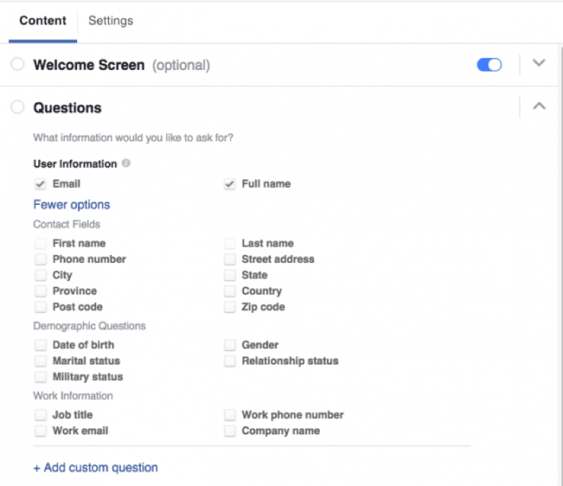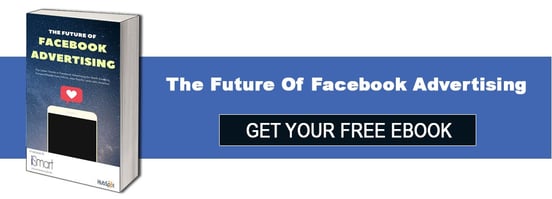By Samantha Hew on Apr 17, 2018 2:20:00 PM
 Source: i New Media
Source: i New Media
High quality leads are the pillar of every thriving B2B business. Hence, sales and marketing teams are always looking for different ways to improve their lead generation efforts.
According to this study, 90% of all marketers indicated that their social media efforts have generated more exposure for their businesses. It is also reported that nearly one-third of the world uses social networks regularly which means social media is a very effective way for reaching a wider audience.
Social media is a necessary part of any lead generation strategy. Lead generation through social media is fast and cost-effective. If you are not sure where to start, we are pleased to share with you 3 ways to use social media for B2B lead generation.
1. Promote gated content
Social media is a two-way engagement platform that requires actual interaction. Two-way communication is important to engage and connect with your audience – through content marketing. If you don’t gate your content, you are essentially sharing valuable resources without getting anything in return. When using social media for lead generation, you can promote gated content by sharing a link to a landing page
What is gated content? It is any sort of content that requires an interested reader that deem your content valuable, to fill up a form, leaving some specific information from visitors (like an email address) in exchange for your eBook, whitepaper, webinar, case studies etc.
By gating your content, you are able to:
Generate more leads: If you capture visitors contact information, you learn more about who they are and where their interests lie and how to reach out to them in the future.
Lead nurturing: Someone who may be reading your content now may not be a ready customer. You can create an email list and nurture this group of people until they are ready to purchase from you.
Keep in mind that gated content can take several forms and you should experiment to see what works best with your target audience.
2. Social media advertising
Social media advertising uses a more focused approach by using targeting to reach out to specific groups of potential customers. Using highly specific target audiences to promoted gated content is a good way to keep advertising costs low and at the same time, ensuring you get qualified leads. Let’s dive into 3 different examples:
- Facebook lead ads
On Facebook, you can select different goals for your campaigns, which makes it a popular choice among marketers.
One great advantage of Facebook lead ads is that Facebook automatically populates the lead form with the user’s contact information, it only takes a few clicks for a potential customer to connect. You are able to choose what information you require from them to ensure you secure a useful lead (as seen in the image below).

Summary of how this process works:
- A user sees an offer they like (typically, an ebook or a white paper)
- The user clicks the ads’ call-to-action
- The user verifies their information which Facebook has pre-filled for them (instead of redirecting them to a landing page)
- The user confirms their pre-filled information, receive the content, and become a lead
- Instagram lead ads
According to Marketing Week, Brands’ photos on Instagram generate 58 times higher engagement per follower than Facebook posts and 120 times higher engagement rates than tweets.
Facebook owns Instagram, so you can use similar lead ads on both platforms. The only difference is Instagram reduces the pre-filing options for advertisers to just email, full name, phone number, and gender. Collecting any further information would mean the user would have to type it in.
Since Instagram lead ads only appear on mobile, and it takes 40 percent longer to fill out a form on a mobile device than on a desktop, you should only request additional information if it is critical for your initial sales efforts.
- LinkedIn Lead Generation Forms
LinkedIn Lead Gen Forms also make it very easy for potential customers to share their information, since they are pre-populated with details from the user’s LinkedIn profile.
Since LinkedIn is primarily a professional networking site, the pre-populated information can include work details like job title, company, and seniority, as well as education details like degree, school, and field of study, giving you a rich set of data about each lead. To maximize conversion, it is best to stick to three or four key fields.
Since LinkedIn Lead Gen Forms don’t require any typing at all from users, it makes it easy for them to add their information on mobile. LinkedIn Lead Gen forms are only available on mobile Sponsored Content campaigns.
3. Social listening
Social Listening is the process of monitoring your customers and prospects on social media to gain valuable brand and industry insights. You can join in conversations, make recommendations and guide prospects towards your brand’s solutions. Here are a few ways you can start practicing social listening:
- Set up Google Alerts: Once you’ve set this up, Google will send you a notification via e-mail every time your company, brand, or any other keywords you want to track are mentioned on the web.
- Monitor hashtags and keywords: Most of us are familiar with the power of hashtags, but as marketers, we mainly use them to expand the reach of our own messages. Instead, research the hashtags that your customers are using. When prospects take to social media to research or ask questions, they can easily look up any given topic using hashtags.
- Invest in a social media management tool: Although it’s not necessary to purchase a social media tool, for big companies or initiatives it can be very helpful. Most of these tools have scheduling capabilities, hashtag tracking, competitor analysis, and much more.
- Join message boards: Many social media platforms have forums, groups or message board capabilities. This can be helpful for B2B marketers — especially on LinkedIn — to hear what customers and prospects are saying. These groups are often broken up by industry, job function and many more. Join in the conversations, answer questions, and offer your product as a valuable solution (remember not to sound so salesy).
- Follow your competitors: Keep an eye on the competition — not just to see what they’re doing, but also to see what complaints their customers have. This can help you generate ideas for your own content and campaigns.
I hope this information is useful in helping you understand how you can use social media to generate leads for your business. Popular social media platforms like Facebook, Instagram and LinkedIn are not just tools for branding but you are able to get more value by using them to generate leads. Start changing the way your business uses social media today!





comments